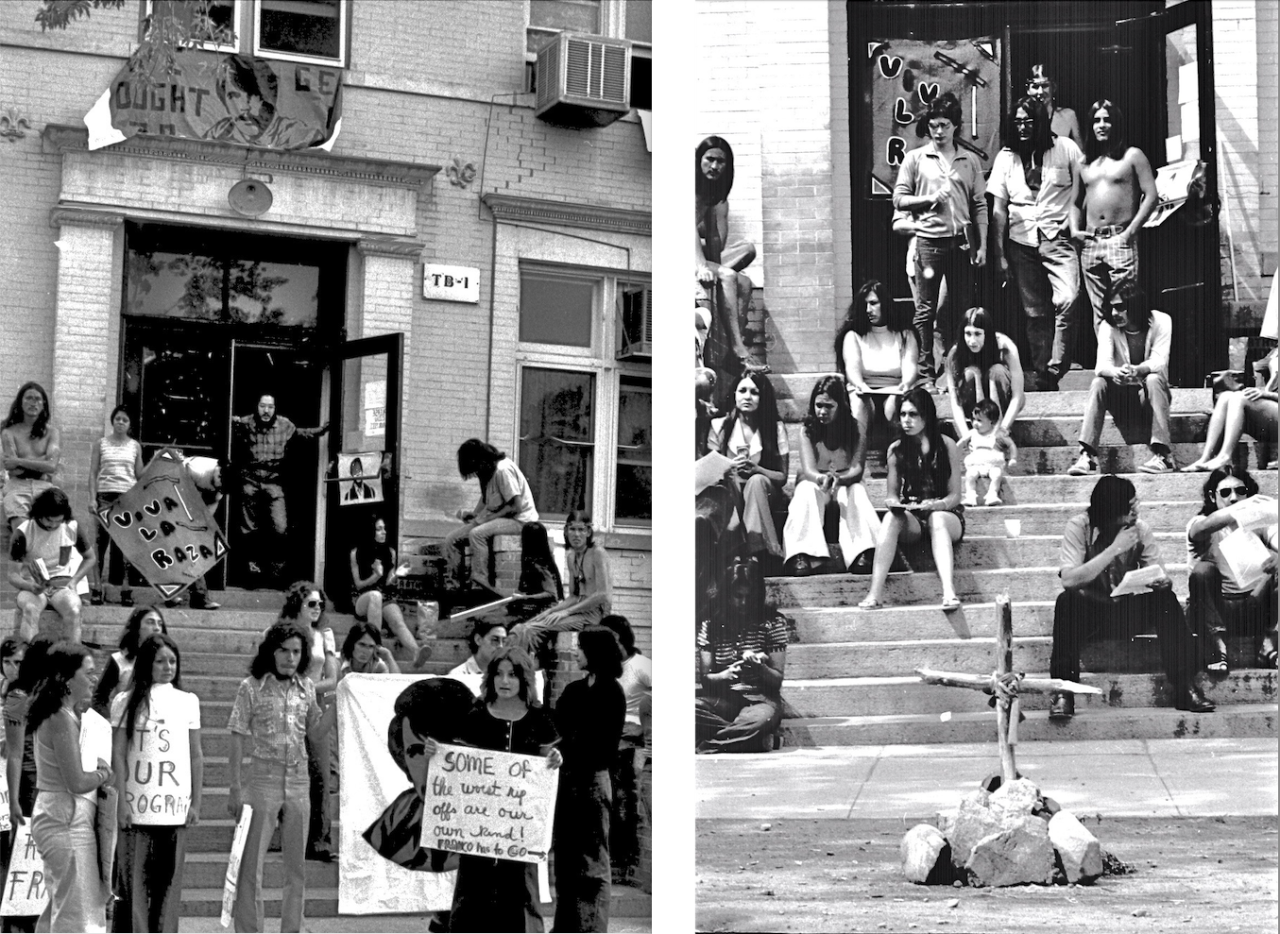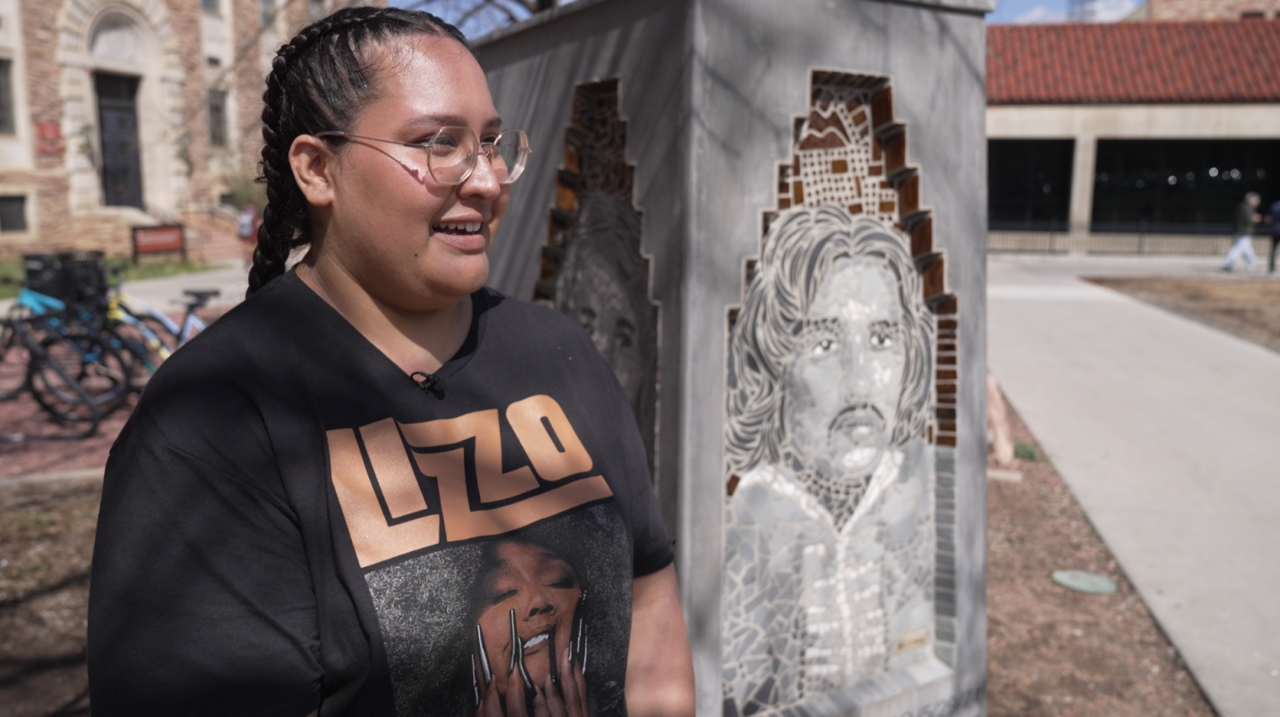BOULDER, Colo. — A mosaic of tiles, laid by hand, tells a story that still resonates with students at the University of Colorado Boulder today.
“Even though it's been almost 50 years, nothing's really changed for us on campus,” said Gabby Mejia, a CU Boulder film student. “They were my age when they died. They wanted to be teachers, doctors and lawyers. And their lives were cut short.”
In 1974, two car bombings less than 48 hours apart took the lives of six activists in the Chicano movement at CU Boulder. They’ve come to be known as Los Seis de Boulder.

Like Mejia, many of those who died were part of a CU Boulder student group known as UMAS – United Mexican American Students.
"I kind of wanted to look for people before me that were dealing with the same things I was dealing with and Los Seis came up,” said Mejia, who recently made a documentary about the car bomb victims as part of her studies at CU Boulder.
“I could still feel the legacy they left of the activism and fighting for what was right,” she said.
Before the bombs went off, UMAS was pressuring the university for financial aid and higher enrollment of Chicanos. The students were occupying Temporary Building One, also known as TB-1.
"They were just fighting for financial aid and space. And they died for it,” Mejia said.

After the bombings, federal and local law enforcement agencies investigated, but no one was ever charged.
The FBI called the victims “very active militants” and claimed, “the occupation of TB-1 and the disagreement between UMAS and the administration was the primary reason for the bomb that exploded,” according to official reports.
“They determined nothing. So, it's still, for me, an open case. And I personally believe these students were victims,” Mejia said.
Many in the Chicano community called the federal investigation a “witch hunt” and filed a civil rights lawsuit against federal agencies.

Today, outside of TB-1, students like Mejia can reflect on what happened with a tangible reminder of the lives lost.
Jasmine Baetz and Celina Jara Tovar were art students at CU Boulder when they built a memorial honoring Los Seis in 2019.
"The real intention was to honor and remember publicly, visibly, Los Seis de Boulder,” Baetz said. “There's such an ahistorical way that you can exist on this campus and cruise through four years, or however many years you're here, without having any sense of what happened here. And that's such a loss for everyone who was here.”
Baetz and Jara Tovar brought together hundreds of people to build the mosaic.
"I believe art can not only share histories that are often ignored, but the way that it brings community and others together to me is a way of healing,” Jara Tovar said.

But that healing was almost cut short when university officials decided the monument would be temporary.
“We had to fight for this to stay here,” Mejia said.
Student protests, as reported by CBS Colorado, led the university to make the art piece permanent.
"For me, it's a reminder to stay strong. It's a reminder that people were here before me, that people were here fighting before me,” Mejia said.
But the story of Los Seis is also a reminder for Mejia that not much has changed.
"It's hard, especially in a predominantly white institution,” she said.
In the 1960s and ‘70s, UMAS’ biggest fight was for parity. Meaning they wanted the number of Chicano students at CU Boulder to proportionately reflect the population of Mexican Americans in Colorado. For example, if 30% of people in the state were Mexican American, UMAS argued that 30% of the students on campus should be Mexican American.
But disparities still exist today. Roughly 35% of students in Colorado public schools were Hispanic during the 2021 to 2022 school year. Whereas only 12% of students enrolled at CU Boulder in 2022 were Latino. And paying for college continues to be a struggle.

“I'm still fighting for financial aid. I'm fighting to be heard and seen," Mejia said. “I am fighting so hard that sometimes I have a target on my back. And I've been scared to come to campus some days because of harassment from other students for standing up for myself.”
But when Mejia walks past the memorial and Temporary Building One, the activism of her ancestors on campus gives her strength.
"It always makes the fight worth it,” she said.
A special thanks to the following institutions for providing archival materials: University of Colorado Boulder Rare and Distinctive Collections, CSU Pueblo Archives and Special Collections, Colorado Historic Newspapers Collection, Denver Public Library Special Collections, Carnegie Library for Local History, History Colorado — Juan Espinosa Collection, The Freedom Archives, Boulder Daily Camera
Denver7 photojournalists Jacob Curtis and Drew Smith contributed to this report.



